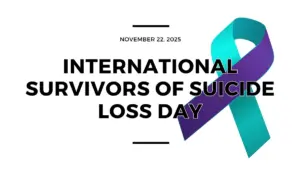Blue Shield mental health coverage makes care more accessible by connecting members with licensed professionals and treatment options that fit their needs.
By understanding how your plan works, you can use your benefits more effectively, whether you’re seeking therapy, medication management, or support for addiction and recovery.
In addition, choosing in-network providers helps make treatment both easier to access and more affordable, so you can focus on getting the care that supports your well-being.

How Blue Shield Mental Health Coverage Works
Blue Shield provides mental health benefits through its network of licensed providers, helping members access counseling, therapy, and psychiatric care at lower costs. Here’s how the coverage generally works:
- Part of your health plan: Mental health resources and care are included in most Blue Shield health insurance plans, just like medical and hospital coverage.
- Network-based system: You’ll pay less when you see providers who are in the Blue Shield network. Out-of-network care usually costs more.
- Referral requirements: Some plans may need a referral from your primary care doctor before you see a mental health specialist.
- Copays and deductibles: Depending on your plan, you may have a small copay per visit or need to meet a deductible before coverage begins.
- Preauthorization: Certain treatments or inpatient programs might require approval from Blue Shield before starting.
- Parity rules: By law, Blue Shield must offer behavioral health benefits at the same level as physical health benefits. This means equal coverage for visits, limits, and costs.
Together, these coverage rules determine how and where you can get care, from choosing a therapist to joining a treatment program. Now that you know how Blue Shield coverage works, it’s helpful to see what types of mental health services are usually included in your plan.
Common Mental Health Services Covered by Blue Shield
Here are some common mental health services that Blue Shield (and many similar health plans) cover. (Note: Coverage can vary depending on the specific plan.)
- Outpatient therapy and psychiatry visits – You can see a therapist or psychiatrist for issues like depression, anxiety, grief, loneliness, or family stress.
- Medication management and psychiatric testing – Care from a psychiatrist may include tests and the prescription of medications when appropriate.
- Behavioral treatment for children under age 21 – For younger members, specialized treatments (like teaching skills for communication, living, and playing) may be covered, typically if a doctor or psychologist prescribes it and the plan approves it.
- Specialty mental health services via county programs – For more serious conditions (e.g., bipolar disorder, schizophrenia), services such as crisis intervention, inpatient hospitalization, residential treatment, or psychiatric medication management may be provided in partnership with county programs.
- Substance use and addiction treatment – If you need help with alcohol or drug use, there are treatment options often accessed after screening by your primary doctor and coordinated via county services.
- Well-being support programs – For members 18+, there may also be resources around emotional well-being, such as meditation, coaching, and self-care tools (for things like stress, work issues, money worries) outside of formal therapy.
These are the services you might use, but the details (costs, visit limits, approvals) depend on your specific plan. The next step is to check your own benefits and confirm what’s covered and what you’ll expect.
Confirming Your Mental Health Benefits Step by Step
Use these quick steps to check exactly what your Blue Shield plan covers and what you’ll pay:
1. Find your plan info
- Get your member ID card.
- Log in to your Blue Shield member portal (or create an account).
- Download your plan documents (EOC/benefits summary).
2. Call the number on your card
- Ask for “mental/behavioral health benefits.”
- Keep your member ID ready.
- Write down the rep’s name and a reference number for the call.
3. Confirm provider network details
- Ask which network you have (e.g., HMO, PPO, EPO).
- Verify if your chosen provider is in-network.
- For HMO: confirm your assigned medical group and whether you need to stay within that group for mental health care.
4. Check costs for outpatient visits
- Copay per therapy/psychiatry visit.
- Deductible: how much remains this year.
- Coinsurance after deductible (if any).
- Out-of-pocket maximum and how much you’ve met.
5. Ask about approvals and referrals
- Do you need a referral from your primary care doctor?
- Is prior authorization required for any services (e.g., intensive programs, inpatient, psychological testing)?
- For HMO: confirm which services the medical group must authorize.
6. Confirm service limits
- Any visit limits per year?
- Are telehealth/virtual therapy visits covered the same as in-person?
- Any limits on testing or group therapy?
7. Check medication coverage
- Which mental health medications are on the formulary (covered list)?
- Copay/coinsurance by tier.
- Any prior authorization or step therapy rules.
8. Ask about higher-level care
- Coverage and costs for IOP/PHP, inpatient hospitalization, or residential treatment.
- Which facilities are in-network.
9. Out-of-network (if needed)
- Do you have OON benefits?
- What are the deductible/coinsurance and allowed amounts?
- How to submit claims and what documents you’ll need.
10. Get exact cost estimates
- Ask your provider for likely CPT/procedure codes for the first visit
- Call Blue Shield with those codes to confirm coverage and cost.
11. Confirm how to start care
- Ask how to schedule the first appointment.
- Verify any no-show or cancellation fees (not usually covered by insurance).
12. Keep records
- Save benefits screenshots, notes from calls, and any approval letters.
- If something is denied, ask about the appeal process.
Tip: You can also ask an in-network clinic to verify benefits on your behalf and give you a cost estimate before you begin. This helps avoid surprises.
What to Expect When Starting Treatment
Once your benefits are confirmed and you’ve chosen a provider, getting started with mental health care is a straightforward process. Here’s what usually happens:
- Initial contact or intake: You’ll schedule your first appointment by phone or online. Some clinics may ask for basic information about your insurance, medical history, or current concerns.
- First appointment: Your first session is often an assessment. The therapist or psychiatrist will ask about your symptoms, lifestyle, stressors, and goals for treatment. This helps them understand your needs and create a care plan.
- Creating a treatment plan: Together, you and your provider decide on the right approach, such as talk therapy, medication management, or a combination of both.
- Setting a schedule: Most people start with weekly or biweekly sessions. You can adjust frequency over time based on progress and comfort.
- Confidentiality and consent: Your provider will explain privacy rules, your rights as a patient, and how your information is protected under HIPAA.
- Ongoing care: You’ll work toward your goals through regular sessions. If needed, your provider might refer you to other specialists or programs for additional support.
- Progress reviews: Over time, your provider may reassess your treatment plan to ensure it’s still meeting your needs or suggest changes if necessary.
Understanding what to expect during treatment helps you feel more prepared and confident about starting care. The next step is choosing the right provider, one who accepts Blue Shield, to make your treatment easier to access and more affordable.
Why Choosing Providers That Accept Blue Shield Makes Treatment More Affordable
These in-network providers have agreed to work with Blue Shield at set rates, which means:
- Lower costs: You’ll pay less out of pocket for each visit. Blue Shield covers a larger portion of the bill when you stay within their network.
- No surprise charges: In-network providers can’t bill you for more than the agreed amount. This protects you from unexpected or high medical bills.
- Easier billing: The clinic handles claim submissions directly with Blue Shield, so you don’t need to pay upfront and wait for reimbursement.
- Clear coverage: You’ll know exactly what’s included, such as copays, deductibles, or session limits, because these are set by your plan.
- Streamlined referrals: If you need additional care, in-network providers can refer you to other specialists or programs covered by Blue Shield.
Choosing an in-network provider, like Oceanrock Health or South Coast Counseling, you can access Blue Shield counseling services for addiction and recovery, along with other mental health support, without worrying about high costs or complicated insurance steps. It’s a practical way to begin treatment with confidence and stay focused on your recovery.








